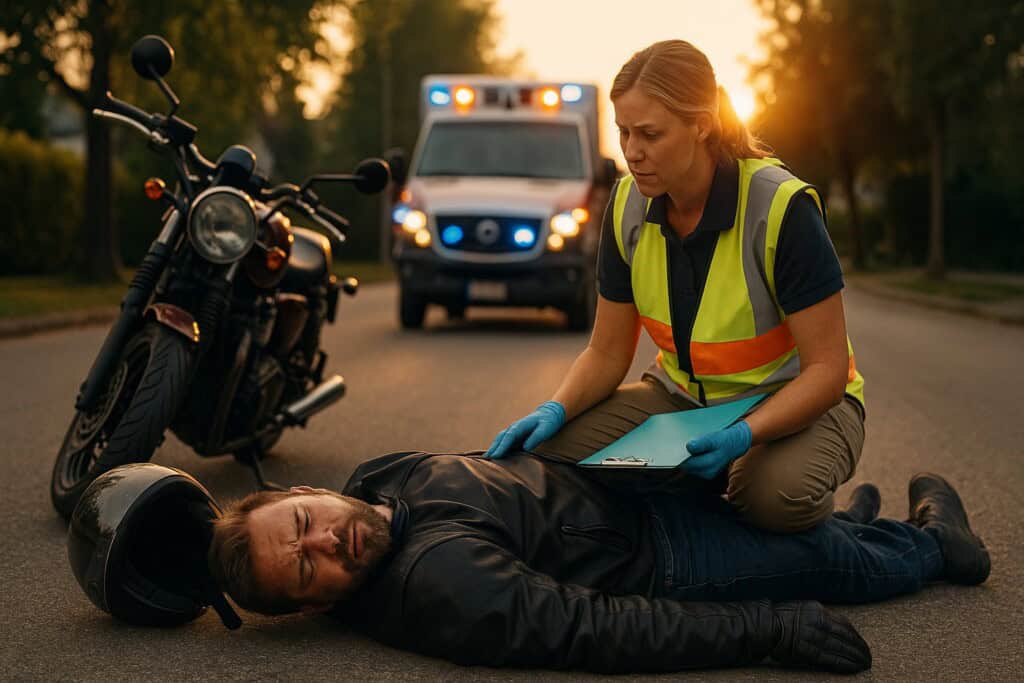Motorcycle accidents in Cape Coral, Florida, can be especially difficult, with the sunny weather and scenic coastal roads attracting thousands of riders year-round. According to the Florida Department of Highway Safety and Motor Vehicles, Lee County reported over 200 motorcycle crashes in recent years, with many resulting in injuries that exceed initial medical predictions. The unique challenges of Southwest Florida’s busy tourist corridors and diverse driving conditions create scenarios where riders face risks that extend far beyond what medical professionals initially anticipate.

There are times when a rider ends up facing a lot more than medical health researchers may have predicted in advance. When Cape Coral riders work with an experienced Cape Coral motorcycle accident lawyer, they gain access to legal professionals who understand both the medical complexities and the unique traffic challenges of the area. Knowing how these dynamics work will help us better respond to the next event that will unfold and make things safer as well.
The Surprising Reality of Motorcycle Injuries
Injuries from motorcycle accidents are severe and unpredictable. Motorists are kept safe from accidents in cars, but the protection given to a motorcyclist from accidents is very little. While there is some safety in wearing safety helmets and protective gear, it does not stop all injuries from happening. Riders may suffer anything from a few scrapes to life-threatening trauma.
Complex Injury Patterns
Injury patterns are complicated because of the nature of injuries sustained in motorcycle crashes. Not only are riders getting hit with no shell to protect them, but they’re not even partially protected like car occupants. Because of this exposure, the risk of severe trauma becomes much higher. Healthcare practitioners are faced with the treatment of injuries that tend to be worse than they first appeared.
Rapid and Accurate Assessment Matters
A motorcycle crash requires prompt and precise evaluation. The duty of emergency responders involves recognizing life-threatening situations in a fraction of a second. Head and spinal cord injuries and broken bones are the most common types of injuries sustained. If something happens that requires immediate attention, delays can result in complications and even death.
Advanced Diagnostic Tools
Diagnostic imaging helps identify hidden wounds. CT scans and MRIs reveal exactly what is wrong with patients. These are tools that assist in creating a comprehensive perspective of the patient’s condition. According to the National Highway Traffic Safety Administration, proper diagnostic protocols can significantly improve treatment outcomes for motorcycle crash victims. Such an informed perspective helps develop more effective treatment approaches.
Adding Better Protection for Riders
A multi-faceted approach is required to reduce the number of motorcyclists who have been killed or injured on roadways. That starts with protective gear. Riders have better protection with helmets, gloves, and jackets made from advanced materials. Promoting better gear use by riders can help decrease the severity of injuries.
Road Safety Initiatives
Road safety initiatives can also help ensure that fewer accidents occur. Drivers and motorcyclists are educated through public awareness campaigns. Knowing how to share the road responsibly will limit the risks. Better enforcement of traffic laws and improved road standards also help create safer conditions.
Training and Education
Motorcyclists do better if they take training courses. These programs focus on teaching defensive riding skills. They teach riders to expect the unexpected. Riders are armed with knowledge that helps them make better, safer decisions on the road.
Advancement in Treatment With Medical Technologies
Motorcycle injuries are also being treated better as medicine advances. New surgical techniques and rehabilitation methods can offer hope for faster recovery. Care plans are individualized by specialists who work together. This customized approach caters to the individual requirements of each patient.
Comprehensive Rehabilitation
Rehabilitation centers provide comprehensive support. Therapists help restore strength and mobility to patients. Psychological support is focused on helping individuals deal with the emotional consequences of traumatic experiences. These combined services are conducive to whole-person recovery.
Need for Continuous Research and Development
Continuous research is essential in enabling better understanding of motorcycle injuries. Studies are conducted to track trends and also to devise safer technologies. Researchers test different materials for protective gear. These innovative ideas are focused on better protection from impact forces.
Collaborative Medical Advances
Better treatment protocols are developed from collaborative work between medical professionals and engineers. Progress comes from collaboration and sharing resources and knowledge. It is this joint effort that is crucial for keeping up with the constant challenges posed by motorcycle crashes.
Conclusion
Crashes involving motorcycles are complicated by factors that may be unique to motorcycles and pose challenges beyond those that would be predicted on a purely medical basis. These injuries have an unpredictable nature and require a proactive approach. Faster assessment, safer roads, and medical developments all result in better outcomes.
By way of education, research, and collaboration, societal forces are at work towards reducing the toll of motorcycle crashes. Making safety a priority and understanding the nature of these injuries. may allow the development of better prevention and treatment approaches. Combined, all of these efforts can do a lot to help keep motorcyclists safe and to offer better recovery outcomes.

